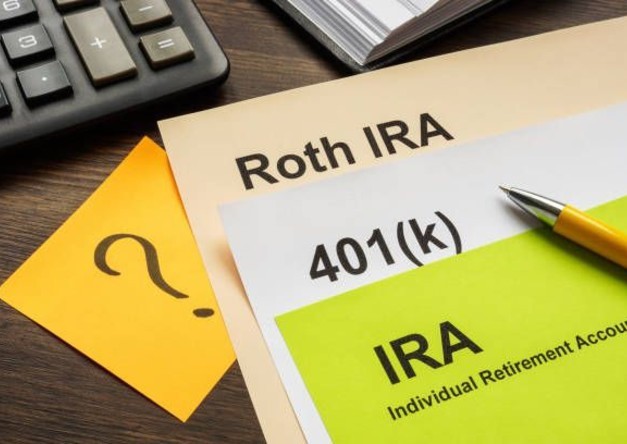401(k) vs Roth IRA: Choosing the Right Retirement Plan
By Davis Clarkson , May 9 2025

The choice of retirement plans is indeed a tough nut to crack for many investors. And it's important for anyone standing on the precipice of their post-working life.
It’s worse now because many people no longer use traditional pension plans. This worry doesn't spare anyone. Depending on your situation, you may be working in a big company or a small business.
On the other hand, you may be a self-employed person or a freelancer. In any case, you'll need to think about things like 401(k) vs Roth IRA.
In this article, we discuss 401(k) vs Roth IRA retirement plans. You learn important tips for saving money for the future.
What Are the Basics of 401(K) vs Roth IRA?
We know that 401(k) vs Roth IRA are all retirement plans. Now, let’s understand how each one works
401(k)
A 401(k) is an occupational retirement savings scheme. Employees can put part of their salary into the scheme in addition to the employer's contribution. These often have restricted choices for investing.
Also, there's a manager who is paid to manage the plan. That person will choose these investments. To be more precise, the traditional 401(k) contribution is made by deducting the amount from the gross income. So, the total income that tax is taken from will be less.
Roth IRAs
In Roth IRAs, the money invested for retirement purposes is contributed after taxes have been paid on it. In this case, you do not get an immediate tax relief. However, they won’t pay any tax on all the later withdrawals. The interest that has been added is also free from tax.
The Roth IRAs have a high level of various investment options compared to the regular 401(k). There's an opportunity to invest in any number of stocks, bonds, mutual funds, and ETFs.
Tax Implications Now vs. Later
One of the major distinguishing features is how retirement accounts are taxed. With traditional 401(k)s and SEP IRAs, you are in effect making an arrangement with the Internal Revenue Service. You pay no taxes now and instead pay them later. Your contribution offers immediate tax advantages.
However, you will be subjected to tax on the regular contribution later. Any accrued income at the time of withdrawal in your post-retirement age will also be taxed.
Roth accounts flip this equation. For a Roth IRA, you won’t be able to save on tax immediately. However, the withdrawals during retirement, including all the growth, are absolutely tax-free. It is very useful if one anticipates earning more in retirement or if tax rates rise with time.
401(k) vs Roth IRA Contribution Limits
It should be noted that the contribution limit for such accounts is surprisingly different. In the year 2025, an employee can save up to a maximum of $23,500 in their 401(k) plan. Then, it allows employees who are 50 years and above to catch up. So, there's a $7,500 catch-up contribution.
Another positive feature of the catch-up is that people aged 60-63 years are also allowed to make more contributions. Importantly, they give some more grace for people who are 60-63 years of age to catch up. So, they can make more contributions. They are allowed to add $11,250 at most.
Roth IRA contribution limits are much lower. $7,000 for the financial year of 2025. But if the person is already above 50 years, they can add $1000 on top of that. Also, eligibility ceases at higher-income levels.
The modified adjusted gross income will also change the maximum amounts when it comes to Roth IRA. So, if you’re married, you’ll likely file together. However, the total MAGI has to be less than $236,000. When it’s more than that, they cannot contribute to Roth IRA.
Can You Contribute to Multiple Accounts?
Yes, it is quite possible to contribute to a number of accounts. However, there are certain rules attached to this action. For instance, one can save through a 401(k) plan that is provided by organizations. At the same time, you can also be putting money towards your retirement with an IRA. It can be traditional or Roth.
Now, you may be covered by any other retirement plans, like those at your workplace. This means the deduction for traditional IRA withholding may be limited. It depends on the income level.
You already know that the annual contribution is limited for every employee. This can now apply to all the 401(k) accounts that you may possess. Let's consider where you have the sort of work where you have a conventional job with a 401(k).
Then, you have another business where it may be possible to have a Solo 401(k). The combined employee contributions of the two cannot go over $23,500 plus any catch-up. Nevertheless, you were able to contribute as the employer for the Solo 401(k). However, that is from your self-employment income. Just make sure you know the current limits and don't go beyond them.
It’s a good idea to mix it up when it comes to retirement account types. If nothing, it will help build tax efficiency. It allows you to have a sound strategy when dealing with taxes. It's even more important when you're of retirement age.
Best Retirement Plan Self-Employed Persons Can Use
SEP IRAs are some sort of self-employed pension. It’s popular for when a person is planning their own retirement individually. They are mostly aimed at people with self-employment, freelancers, or owners of small enterprises. In fact, it’s the best retirement plan self-employed people use.
Therefore, only employers make contributions to an SEP IRA. The sum cannot exceed 25% of the compensation or an annual limit, whichever is smaller. Contributions to SEP IRA are also free from tax, like most of the 401(K) plans are. Then, when you retire, you pay normal income tax when you take the money out.
SEP IRAs have a very liberal provision on contribution, whereby up to 25% of the compensation of the employee can be contributed. It could be up to $70,000 for the year 2025. This makes the SEP IRA a good option that self-employed individuals can use. Mostly, those earning good wages are planning for their retirement.
Which Plan Saves the Most in Taxes?
For this, it is impossible to give an answer that would suit all people. It depends on your current tax situation, the expected future tax rates and your timing preference for the tax benefit.
Regular 401(k) and SEP IRAs give the taxpayers an immediate tax break. That is, they decrease current taxable income. This might prove especially useful for those clients with high taxable income in higher tax brackets. But when it's time to get your money, you have to give the IRS what belongs to them.
Roth accounts do not offer relief from the present tax since the growth and the withdrawal are tax-free. This could yield a huge tax reduction over the years. That's if your investments are well-performing. Imagine that all the increase in your Roth account, possibly hundreds of thousands, will not be taxed.
On a Final Note
Deciding between 401(k) vs Roth IRA or SEP IRA does not have to be complicated. These accounts are distinct from one another. They can be very useful in different ways depending on your retirement plan. However, retirement planning is not about selecting one perfect account. It is about finding a combination of those that are suitable for you. That’s why you need the knowledge. That way, you’re already on the right track to being able to live through your golden years comfortably.
Plan your retirement with confidence using our pay stub generator. Our platform helps you generate precise pay stubs. We make it easier to track earnings. This helps you maximize contributions to your 401(k) vs Roth IRA. Let’s help you secure your financial future today!Similar Articles
We’ve helped numerous individuals and businesses create professional documents! Create yours today!










